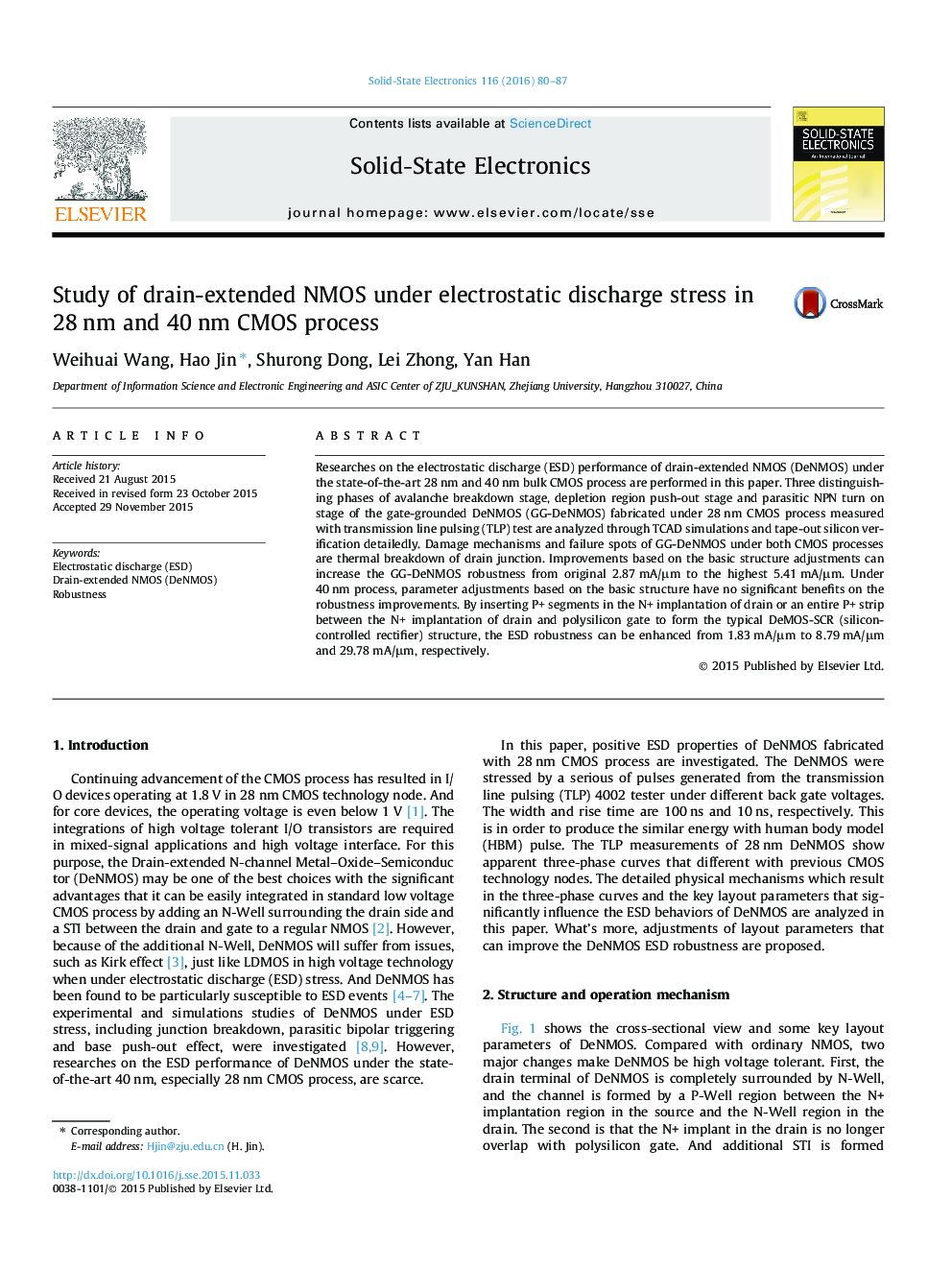| Article ID | Journal | Published Year | Pages | File Type |
|---|---|---|---|---|
| 7150914 | Solid-State Electronics | 2016 | 8 Pages |
Abstract
Researches on the electrostatic discharge (ESD) performance of drain-extended NMOS (DeNMOS) under the state-of-the-art 28 nm and 40 nm bulk CMOS process are performed in this paper. Three distinguishing phases of avalanche breakdown stage, depletion region push-out stage and parasitic NPN turn on stage of the gate-grounded DeNMOS (GG-DeNMOS) fabricated under 28 nm CMOS process measured with transmission line pulsing (TLP) test are analyzed through TCAD simulations and tape-out silicon verification detailedly. Damage mechanisms and failure spots of GG-DeNMOS under both CMOS processes are thermal breakdown of drain junction. Improvements based on the basic structure adjustments can increase the GG-DeNMOS robustness from original 2.87 mA/μm to the highest 5.41 mA/μm. Under 40 nm process, parameter adjustments based on the basic structure have no significant benefits on the robustness improvements. By inserting P+ segments in the N+ implantation of drain or an entire P+ strip between the N+ implantation of drain and polysilicon gate to form the typical DeMOS-SCR (silicon-controlled rectifier) structure, the ESD robustness can be enhanced from 1.83 mA/μm to 8.79 mA/μm and 29.78 mA/μm, respectively.
Related Topics
Physical Sciences and Engineering
Engineering
Electrical and Electronic Engineering
Authors
Weihuai Wang, Hao Jin, Shurong Dong, Lei Zhong, Yan Han,
